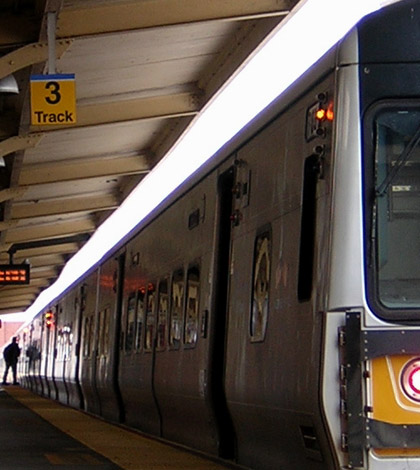Ronkonkoma-bound Long Island Rail Road riders—who routinely endure some of the worst delays in the commuter system—are nearing a long-awaited solution, according to LIRR President Helena Williams, who said that the double track project is getting closer to breaking ground.
The Main Line track between Farmingdale and Ronkonkoma has seen ridership double over the last 25 years since it was electrified in 1988, but the service has always been vulnerable to disruptions because two-thirds of the 18-mile span consists of only a single pair of tracks. When a train breaks down, there’s no way around it.
“Two tracks are better than one,” said Williams, repeating her mantra for this ambitious project that marks a major investment in the railroad.
The MTA has committed $138 million to the planning and construction of phase one of the Double Track Project, which is slated to commence along a a 4-mile stretch between Ronkonkoma and Central Islip come November. The preliminary design and environmental assessment has just been done, and the LIRR is hoping to complete its review by next month and begin putting contracts out to bid soon thereafter. If they stick to their schedule, it should be done in two years.
The Main Line should see “shovels in the ground” this fall, she said. “We’re going forward.”
Unlike the more controversial—and three times more expensive (at $1.5 billion)—Third Track proposal between Floral Park and Hicksville, no homes or businesses will be significantly affected by double-tracking the Ronkonkoma line, she said, because the LIRR can do the job within its existing right of way. In other words, there are “fewer backyards” to contend with.
Phase Two, which would extend the double track corridor to Farmingdale, requires another $300 million from the MTA’s next five-year capital funding program. If that money is forthcoming in a timely fashion, then Williams predicts the next stretch can be finished by 2018. With the money they already have, they expect to complete the design, at least, for the entire 18-mile segment.
In other news, the LIRR is slated to get nearly $21 million in Superstorm Sandy recovery aid from the Federal Transit Administration, which will help the railroad repair bridges, signals and other infrastructure.
As for the gap at the top of the MTA after Joseph Lhota left his job as chairman to run as a Republican mayoral candidate in New York City, Williams said she’s optimistic that her railroad wouldn’t get overlooked because the interim MTA Executive Director Thomas Prendergast is a former LIRR president.
If he’ll have the clout to guarantee that the LIRR gets adequate funding for Phase II of the double track remains to be seen. The riders on the Ronkonkoma line will just have to keep their fingers crossed.

































